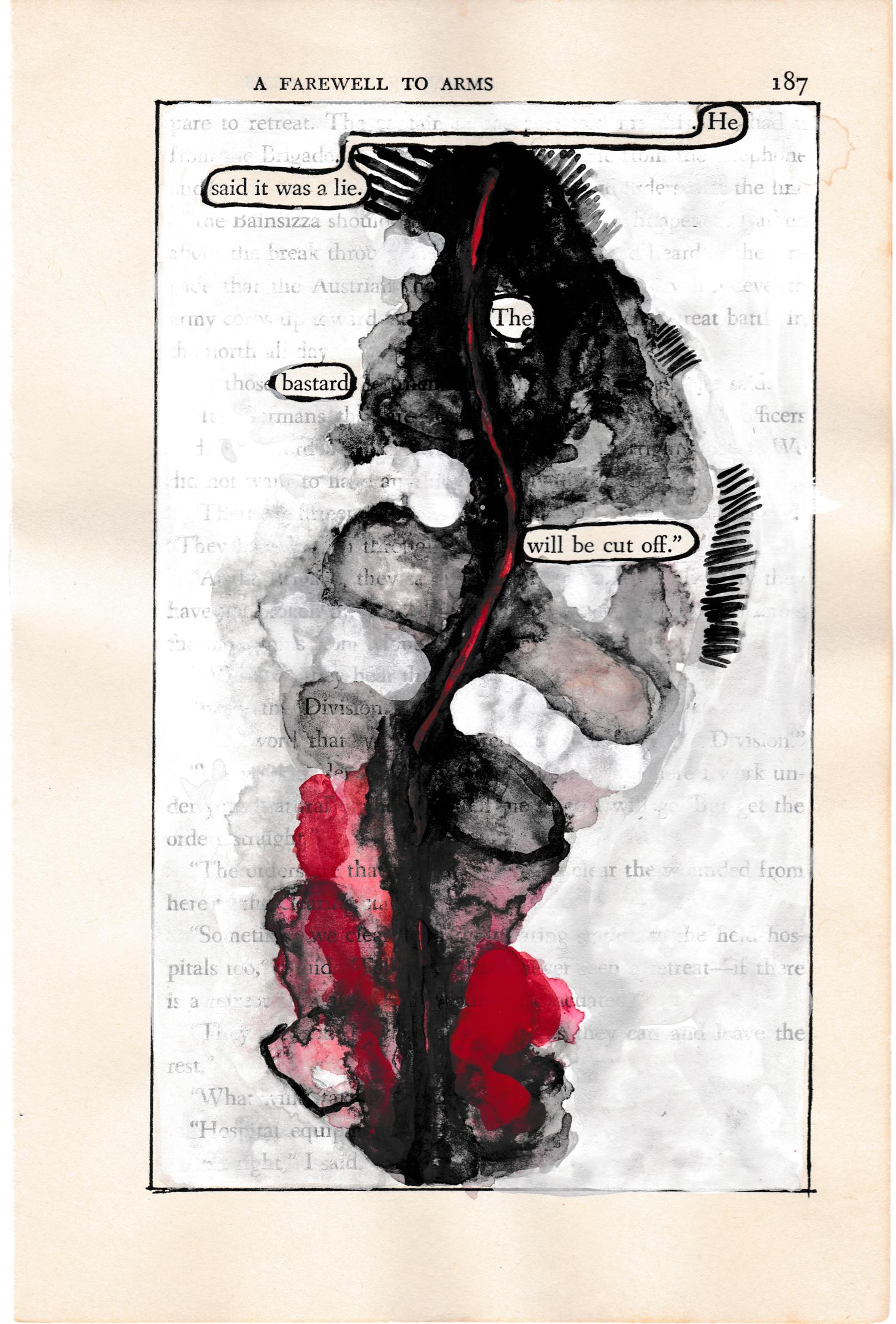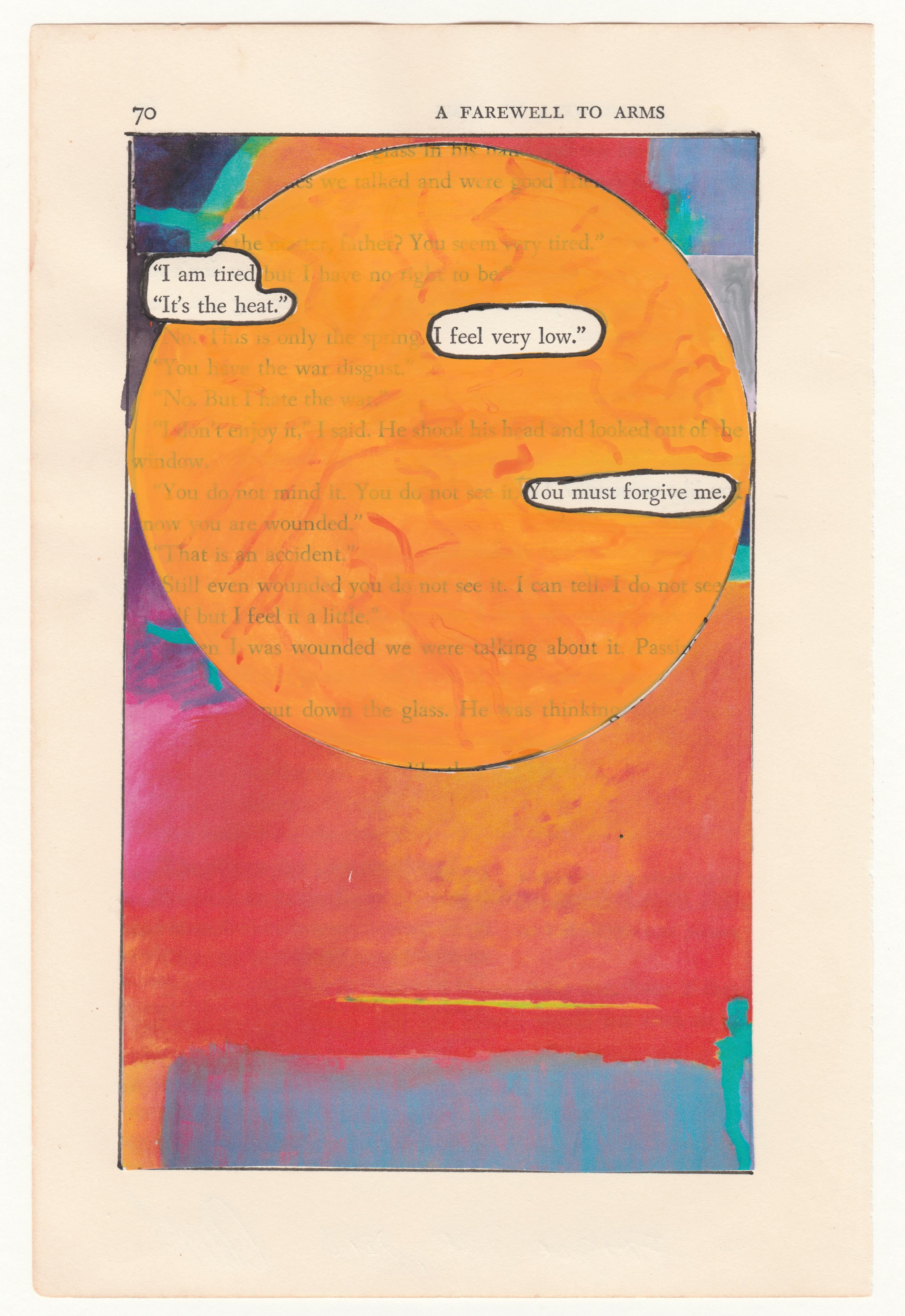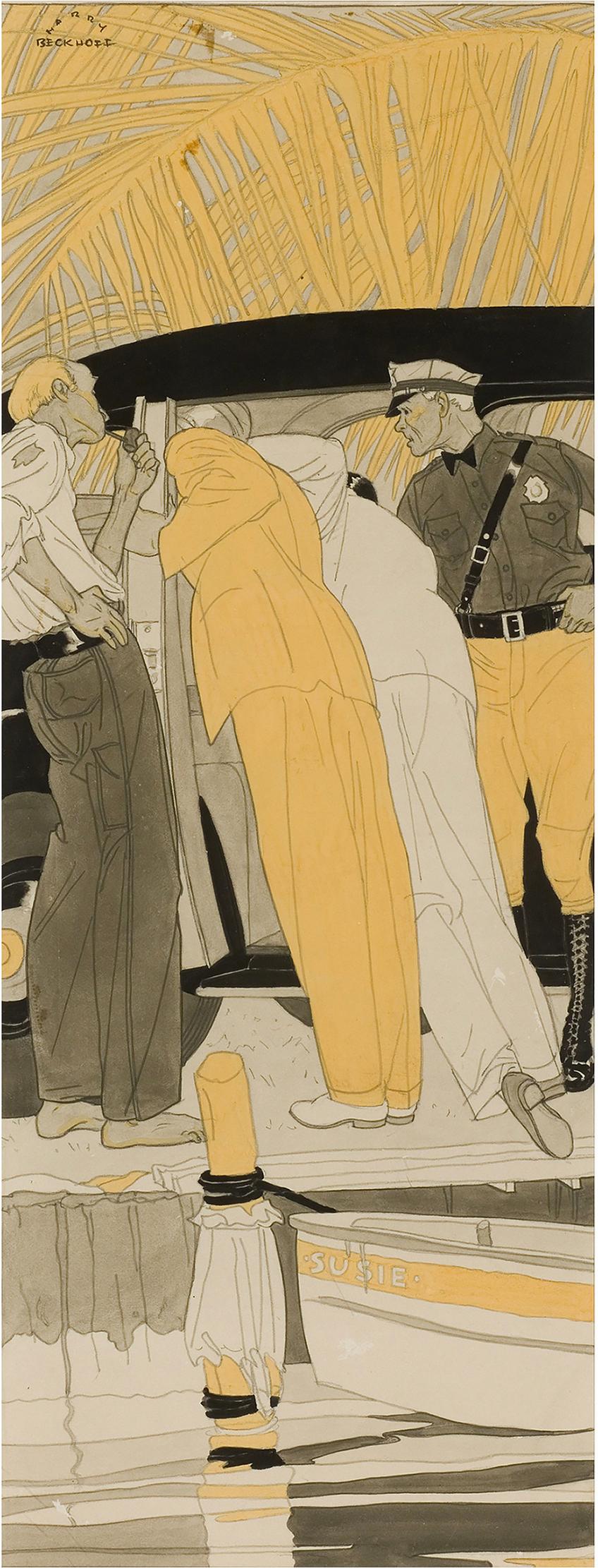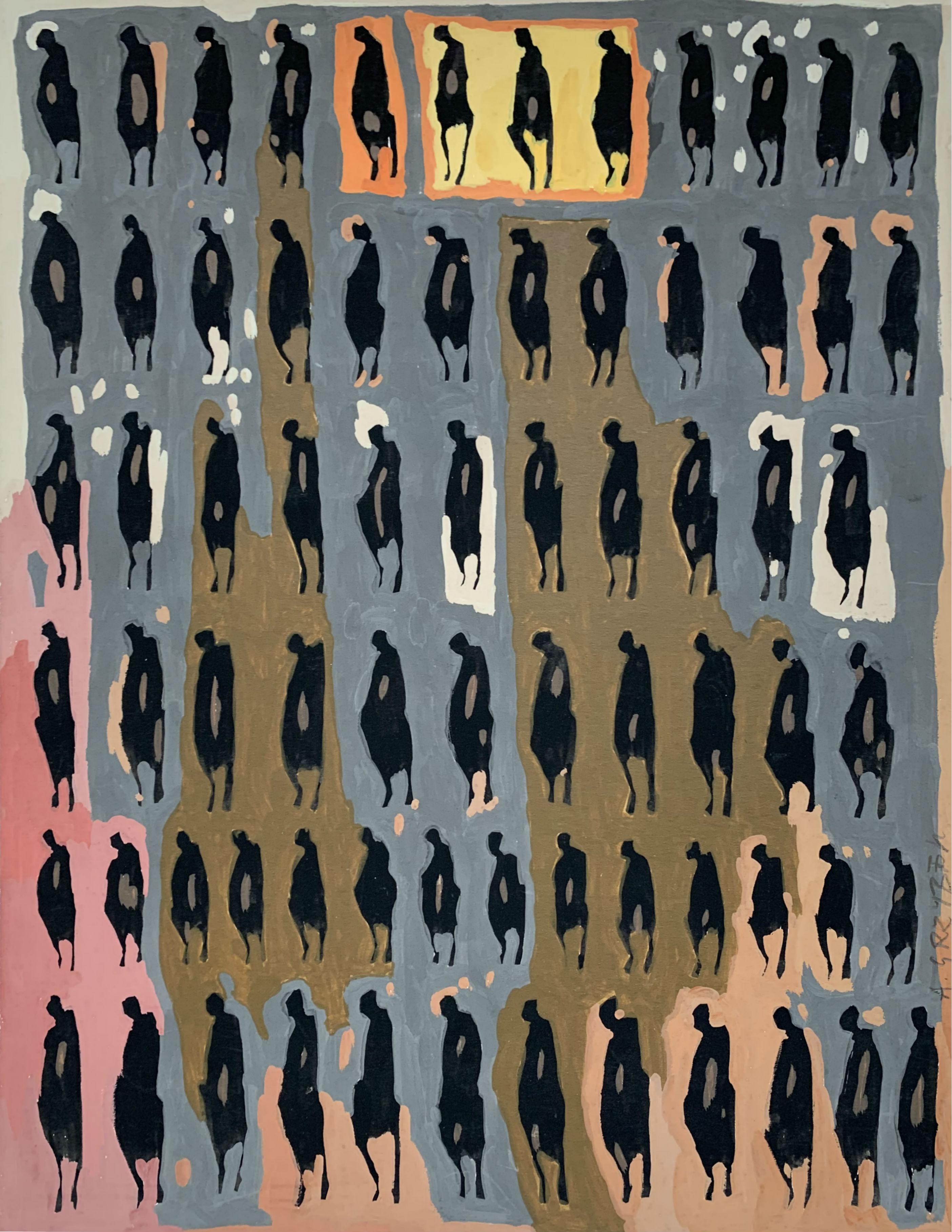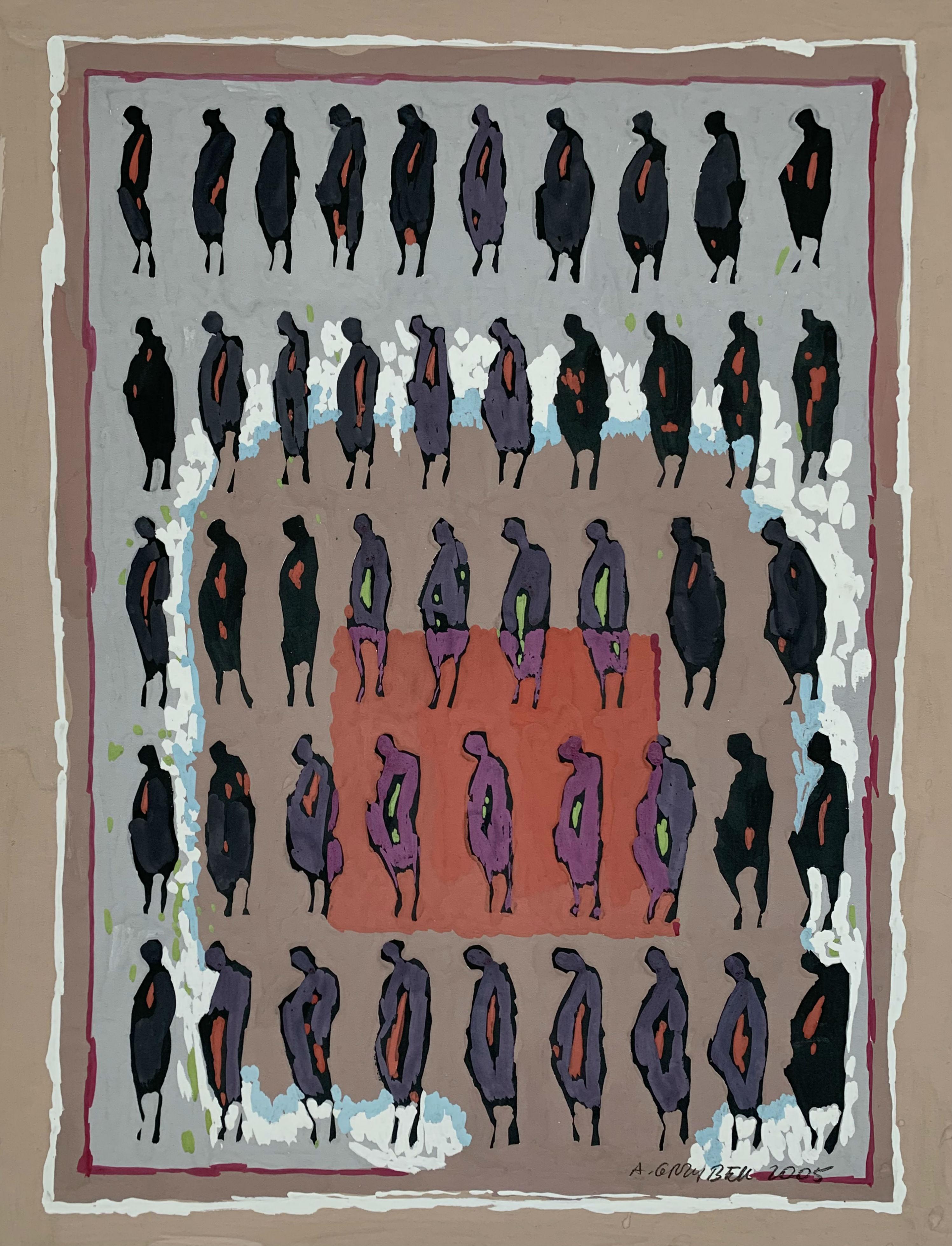Items Similar to Rowing Sculling Team Regatta, Life Magazine - African American Illustrator
Want more images or videos?
Request additional images or videos from the seller
1 of 9
E. Simms CampbellRowing Sculling Team Regatta, Life Magazine - African American Illustrator 1930
1930
About the Item
E. Simms Campbell was the first African-American illustrator/ cartoonist published in nationally distributed, slick magazines, he created Esky, the familiar pop-eyed mascot of Esquire. This early work of 1930 was done on assignment for an interior page of Life Magazine. It features two Rowing teams engaged in spirited competition with cheering onlookers. This is a highly stylized black-and-white illustration and is masterfully executed. The work is composed of two illustrations, 6 x 9 inches and 2-3/4 x 2 inches respectively. It is initialed center bottow ESC. unframed
Campbell left the University of Chicago and transferred to and received his degree from the Chicago Art Institute.[3]
Professional career
During a job as a railroad dining-car waiter, Campbell sometimes drew caricatures of the train passengers, and one of those, impressed by Campbell's talent, gave him a job in a St. Louis art studio, Triad Studios.
He spent two years at Triad Studios before moving to New York City in 1929. A month afterward, he found work with the small advertising firm, Munig Studios, and began taking classes at the National Academy of Design.During this time, he contributed to various magazines, notably Life, & Judge
Following the suggestion of cartoonist Russell Patterson to focus on good girl art, Campbell created his "Harem Girls", a series of watercolor cartoons that attracted attention in the first issue of Esquire, debuting in 1933. Campbell's artwork was in almost every issue of Esquire from 1933 to 1958 and he was the creator of its continuing mascot, the cartoon character in a silk top hat.
He also contributed to The Chicagoan, Cosmopolitan, Ebony, The New Yorker, Playboy, Opportunity: A Journal of Negro Life, Pictorial Review, and Redbook.
His commercial artwork for advertising included illustrations for Barbasol, Springmaid, and Hart Schaffner & Marx.
Campbell also was the author of a chapter on blues music in the 1939 book Jazzmen, a seminal study of jazz's history and development.
Campbell died in White Plains, New York, in 1971
- Creator:E. Simms Campbell (1906 - 1971, American)
- Creation Year:1930
- Dimensions:Height: 6 in (15.24 cm)Width: 9 in (22.86 cm)Depth: 1 in (2.54 cm)
- Medium:
- Period:
- Condition:
- Gallery Location:Miami, FL
- Reference Number:1stDibs: LU385313273202
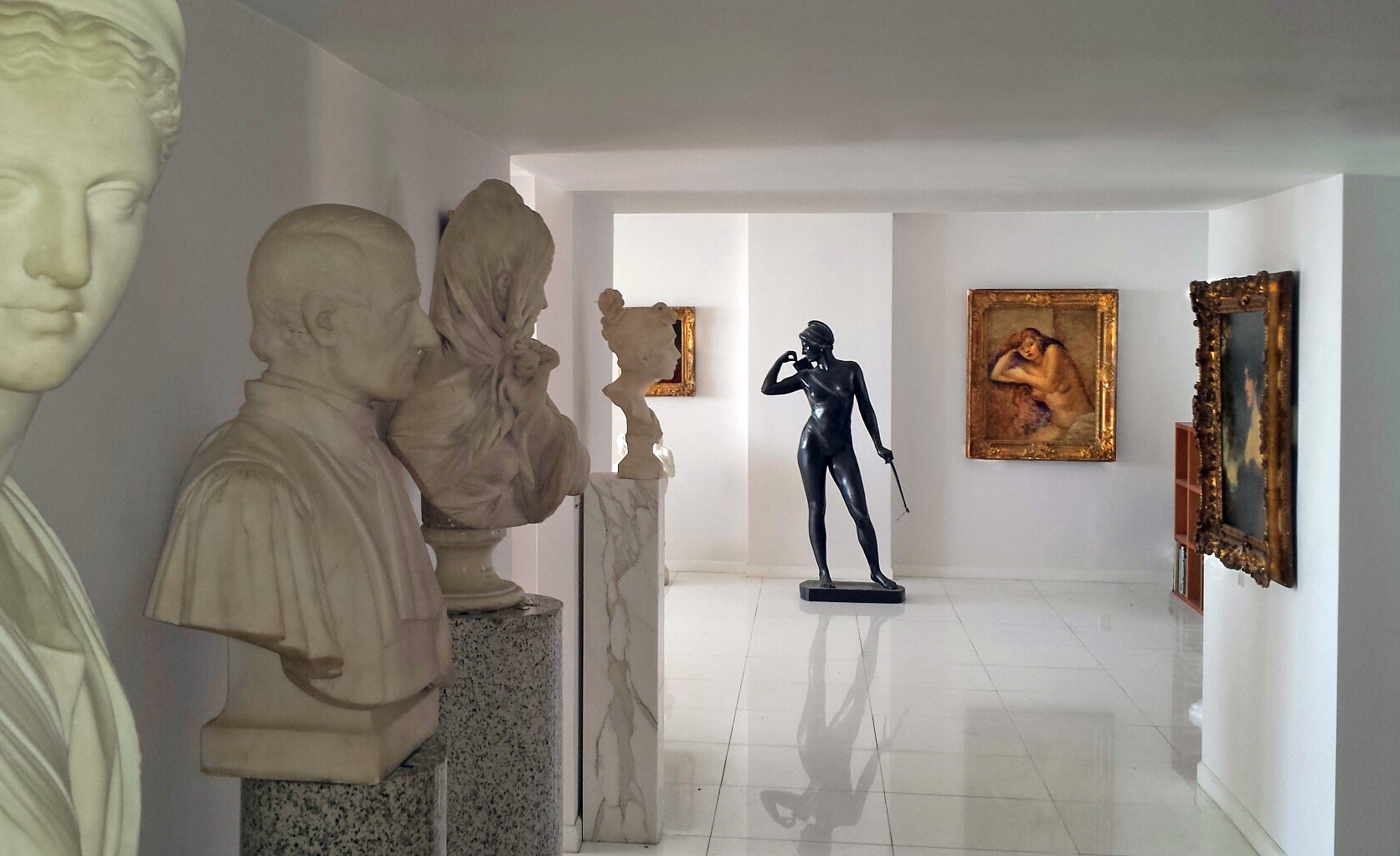
About the Seller
4.9
Platinum Seller
These expertly vetted sellers are 1stDibs' most experienced sellers and are rated highest by our customers.
Established in 2005
1stDibs seller since 2016
102 sales on 1stDibs
Typical response time: 1 hour
- ShippingRetrieving quote...Ships From: Miami, FL
- Return PolicyA return for this item may be initiated within 3 days of delivery.
More From This SellerView All
- Searching the Car - Desaturated Colors Muted Warm Yellows and GreyBy Harry BeckhoffLocated in Miami, FLThis Harry Beckhoff illustration is masterfully rendered and intricately designed in line and wash. It's as abstract as it's representational with its graphic style, clean lines, and flat patterning. Every element in the composition works in harmony without a line out of place. The flat and abstract nature of the work rivals that of the great modernist painters of the 1930s. Perhaps this was done for a major newsstand magazine like Collier's. Although he studied with Dean Cornwell and Harvey Dunn, he didn't pursue the style of painterly brushstrokes and impastos. Instead, he defined his forms with flat shapes, whose internal forms are defined by thin lines. The emphasis is more on silhouette and line than it is on texture and lighting. Beckhoff also described his work as having been influenced by illustrators like Pierre Brissaud...Category
1930s Figurative Drawings and Watercolors
MaterialsWatercolor, Illustration Board
- Black Power Fist, Thumbs Up, Peace Sign - Hand SignalsBy Murray TinkelmanLocated in Miami, FLMurray Tinkelman builds his works out of tiny meticulously placed cross hatchings that are organized into horizontal and diagonal structures. Most are done with a ruler and some fre...Category
1970s Pointillist Figurative Drawings and Watercolors
MaterialsInk, Pen
- The ThinkerBy Willem de KooningLocated in Miami, FLA large charcoal-on-paper rendering by arguably one of America's most influential artists. It comes from the pioneering Allan Stone Galleries, who ...Category
1960s Abstract Expressionist Figurative Drawings and Watercolors
MaterialsPaper, Charcoal
- Environmental Prognostication Coil Narrative "Homo Sapiens R.I.P."Located in Miami, FL"They paved paradise and put up a parking lot," Joni Mitchell said. - - Created in 1969, at the dawn of the American environmental movement, artist Richard Erdoes draws a sequential narrative in the form of a coil. From inception to destruction, it illustrates a list of things that humans are doing to destroy the world we live in. The work was commissioned for school-age humans and executed in a whimsically comic way. Yet the underlying narrative is sophisticated and foreshadows a world that could be on the brink of ecological disaster. Graphically and conceptually, this work exhibits an endless amount of creativity and Erdoes cartoony style is one to fall in love with. Signed lower right. Unframed 12.4 inches Width: 12.85 inches Height is the live area. Board is 16x22 inches. Richard Erdoes (Hungarian Erdős, German Erdös; July 7, 1912 – July 16, 2008) was an American artist, photographer, illustrator and author. Early life Erdoes was born in Frankfurt,to Maria Josefa Schrom on July 7, 1912. His father, Richárd Erdős Sr., was a Jewish Hungarian opera singer who had died a few weeks earlier in Budapest on June 9, 1912.After his birth, his mother lived with her sister, the Viennese actress Leopoldine ("Poldi") Sangora,He described himself as "equal parts Austrian, Hungarian and German, as well as equal parts Catholic, Protestant and Jew..."[4] Career He was a student at the Berlin Academy of Art in 1933, when Adolf Hitler came to power. He was involved in a small underground paper where he published anti-Hitler political cartoons which attracted the attention of the Nazi regime. He fled Germany with a price on his head. Back in Vienna, he continued his training at the Kunstgewerbeschule, now the University of Applied Arts, Vienna.[5] He also wrote and illustrated children's books and worked as a caricaturist for Tag and Stunde, anti-Nazi newspapers. After the Anschluss of Austria in 1938 he fled again, first to Paris, where he studied at the Academie de la Grande Chaumiere, and then London, England before journeying to the United States. He married his first wife, fellow artist Elsie Schulhof (d. xxxx) in London, shortly before their arrival in New York City. In New York City, Erdoes enjoyed a long career as a commercial artist, and was known for his highly detailed, whimsical drawings. He created illustrations for such magazines as Stage, Fortune, Pageant, Gourmet, Harper's Bazaar, Sports Illustrated, The New York Times, Time, National Geographic and Life Magazine, where he met his second wife, Jean Sternbergh (d. 1995) who was an art director there. The couple married in 1951 and had three children.[6] Erdoes also illustrated many children's books. An assignment for Life in 1967 took Erdoes to the Pine Ridge Indian Reservation for the first time, and marked the beginning of the work for which he would be best known. Erdoes was fascinated by Native American culture, outraged at the conditions on the reservation and deeply moved by the Civil Rights Movement that was raging at the time. He wrote histories, collections of Native American stories...Category
1960s American Realist Landscape Drawings and Watercolors
MaterialsInk, Gouache, Illustration Board
- Apocalypse, Catastrophic Destruction of the World, Surrealism - Life MagazineLocated in Miami, FLApocalypse in 1962? At the height of the Cold War, Life Magazine commissions an illustration that describes the world's end by means other than a nuclear war with Russia. Richard Erdoes brilliantly illustrates the work with his highly stylized painting technique. My favorite part of the work is on the left side showing a group of people packed together as they fall into oblivion. A clear reference would be Hieronymus Bosch's "The Last Judgment " Once Again the World Ends." Illustration published in Life Magazine, Feb. 9, 1962 Signed in lower right image. Unframed Richard Erdoes (Hungarian Erdős, German Erdös; July 7, 1912 – July 16, 2008) was an American artist, photographer, illustrator and author. Early life Erdoes was born in Frankfurt,[1] to Maria Josefa Schrom on July 7, 1912. His father, Richárd Erdős Sr., was a Jewish Hungarian opera singer who had died a few weeks earlier in Budapest on June 9, 1912.[2] After his birth, his mother lived with her sister, the Viennese actress Leopoldine ("Poldi") Sangora,[3] He described himself as "equal parts Austrian, Hungarian and German, as well as equal parts Catholic, Protestant and Jew..."[4] Career He was a student at the Berlin Academy of Art in 1933, when Adolf Hitler came to power. He was involved in a small underground paper where he published anti-Hitler political cartoons which attracted the attention of the Nazi regime. He fled Germany with a price on his head. Back in Vienna, he continued his training at the Kunstgewerbeschule, now the University of Applied Arts, Vienna.[5] He also wrote and illustrated children's books and worked as a caricaturist for Tag and Stunde, anti-Nazi newspapers. After the Anschluss of Austria in 1938 he fled again, first to Paris, where he studied at the Academie de la Grande Chaumiere, and then London, England before journeying to the United States. He married his first wife, fellow artist Elsie Schulhof (d. xxxx) in London, shortly before their arrival in New York City. In New York City, Erdoes enjoyed a long career as a commercial artist, and was known for his highly detailed, whimsical drawings. He created illustrations for such magazines as Stage, Fortune, Pageant, Gourmet, Harper's Bazaar, Sports Illustrated, The New York Times, Time, National Geographic and Life Magazine, where he met his second wife, Jean Sternbergh (d. 1995) who was an art director there. The couple married in 1951 and had three children.[6] Erdoes also illustrated many children's books. An assignment for Life in 1967 took Erdoes to the Pine Ridge Indian Reservation for the first time, and marked the beginning of the work for which he would be best known. Erdoes was fascinated by Native American culture, outraged at the conditions on the reservation and deeply moved by the Civil Rights Movement that was raging at the time. He wrote histories, collections of Native American stories...Category
1960s Surrealist Figurative Drawings and Watercolors
MaterialsMixed Media, Illustration Board, Board, Gouache
- Vogue Magazine Illustration Turn of the Century - Woman IllustratorBy Helen DrydenLocated in Miami, FLEarly in the artist's career most likely for Vogue Magazine. Signed lower left. Helen Dryden (1882–1972) was an American artist and successful industrial designer in the 1920s and 1...Category
1910s Academic Figurative Drawings and Watercolors
MaterialsPencil, Graphite, Gouache, India Ink
You May Also Like
- "#187 – HE SAID IT WAS A LIE", ink, pencil, gouache, found vintage book, poetryBy Amy WilliamsLocated in Toronto, Ontario"#187 – HE SAID IT WAS A LIE" is from Amy Williams' series A Farewell to Arms – wherein the artist is working directly onto page 187 of a found copy of Er...Category
21st Century and Contemporary Contemporary Abstract Drawings and Waterco...
MaterialsPaper, Found Objects, Ink, Gouache, Pencil
- "#220 – PEACE", ink, pencil, gouache, collage, vintage book, hemingway, poetryBy Amy WilliamsLocated in Toronto, Ontario"#220 – PEACE" is from Amy Williams' series "A Farewell to Arms" – wherein the artist works directly onto page 220 of a found copy of Ernest Hemingway's W...Category
21st Century and Contemporary Contemporary Figurative Drawings and Water...
MaterialsGouache, Pencil, Paper, Found Objects, Ink
- "#70 – I AM TIRED", ink, pencil, gouache, collage, vintage, hemingway, poetryBy Amy WilliamsLocated in Toronto, Ontario"#70 – I AM TIRED" is from Amy Williams' series "A Farewell to Arms" – wherein the artist works directly onto page 70 of a found copy of Ernest Hemingway'...Category
21st Century and Contemporary Contemporary Figurative Drawings and Water...
MaterialsPaper, Found Objects, Ink, Gouache, Pencil
- Untitled - XXI Century, Gouache Painting, Figurative, PortraitBy Aleksander GrzybekLocated in Warsaw, PLALEKSANDER GRZYBEK He was born in Białystok. He studied artistic education in the studio of painting of prof. Marian Bogusz and Andrzej Kołodziejek....Category
Early 2000s Other Art Style Abstract Drawings and Watercolors
MaterialsCardboard, Gouache
- Untitled - XXI Century, Gouache Painting, Figurative, PortraitBy Aleksander GrzybekLocated in Warsaw, PLALEKSANDER GRZYBEK He was born in Białystok. He studied artistic education in the studio of painting of prof. Marian Bogusz and Andrzej Kołodziejek. He graduated in 1979. His works c...Category
Early 2000s Other Art Style Abstract Drawings and Watercolors
MaterialsGouache, Cardboard
- Red rectangle - XXI Century, Gouache Painting, Figurative, PortraitBy Aleksander GrzybekLocated in Warsaw, PLALEKSANDER GRZYBEK He was born in Białystok. He studied artistic education in the studio of painting of prof. Marian Bogusz and Andrzej Kołodziejek....Category
Early 2000s Other Art Style Abstract Drawings and Watercolors
MaterialsGouache, Cardboard
Recently Viewed
View AllMore Ways To Browse
African City Painting
Original Art Deco Gouache
John Dickinson Sofa
Judi Betts
Pizza Shark
Gail Rodgers
Chateau Marmont Drawing
Stephen Jay Lane
19th Century Pencil Drawing
Pen And Ink Fashion Drawings
Emil Weiss
Ladies Dance Shoes
Iles De Lerins
Mamani Mamani
Mid Century Abstract Drawing
Dancer Framed Print
Series Of Botanicals
Black And White Hand Painted Painting
